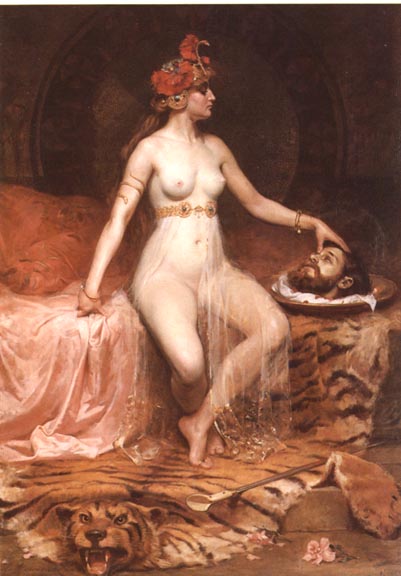Although the painterly subject of the woman who beheads a man or, as in the case of Salome, has him beheaded obviously provides a vehicle to express male fear of women in the last decades of the nineteenth century, it has a long and complex history in the arts, in which some of the beheading or destroying women appear as national heroines. Whereas Salome, obviously a destroying woman, long has served, like Delilah, as an emblem of dangerous and destructive female sexuality, Judith, who herself kills an enemy of God's people is an obvious heroine, as is Jael, who kills Sisera by driving a tent pen into his skull. Here destructive female sexuality is acceptable because it is used in a good cause.


In certain periods Judith’s dangerous sexuality comes to the fore rather than her heroism, something made clearer by comparing Lucas Cranach the Elder’s Judith with the head of Holofernes, which depicts the heroine fully clothed, with Jan Massys’s work of the same name in which the female savior of the Israelites appears nude, thus emphsizing her sexuality.
Depictions of beheading women in Western Art
Last modified 16 November 2015